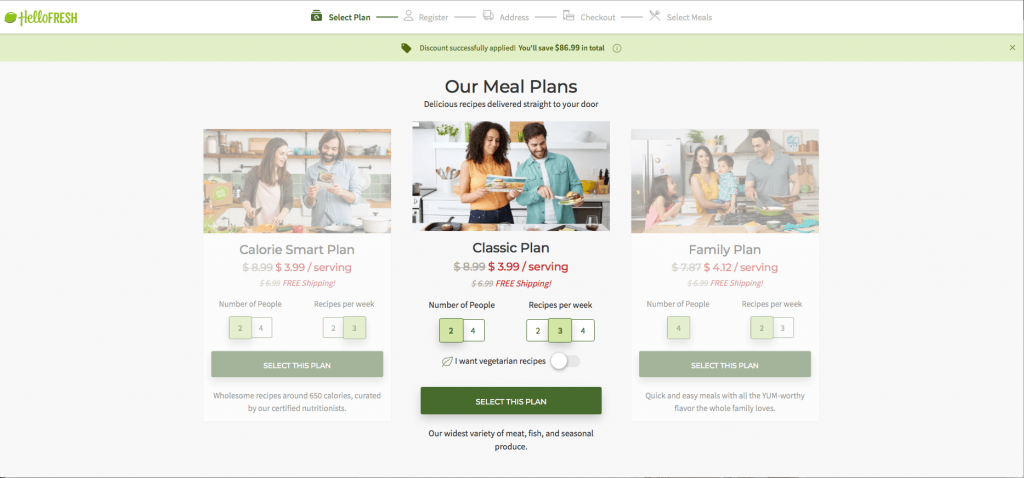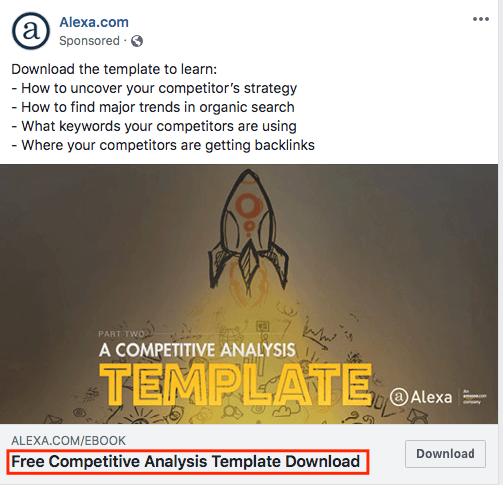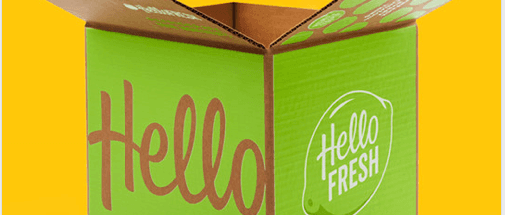Others
Direct Response Marketing: 5 Best Practices for Creating Direct Response Ads
Here’s a great article from WebFX Blog
Are you looking to gain more leads and revenue for your business through compelling ad copy? If so, direct response marketing is an excellent strategy for your business. Direct response marketing allows you to create click-worthy ads that motivate your audience to take action.
On this page, we’ll explore this strategy and share five direct marketing best practices to use. If you need professional assistance managing your direct response ads, call us today at 888-601-5359 or contact us online to learn more about our online advertising services.
What is direct response marketing?
Direct response marketing involves creating ads that evoke an immediate response from your audience. This strategy encourages your audience to take action on your ad through enticing offers.
Direct response ads include:
- TV commercials
- Print marketing
- Radio spots
- Websites
- Online ads
In terms of digital marketing, you’ll find these ads as pay-per-click (PPC) ads or social media ads. These ads make irresistible offers to push prospects to become leads.
For example, in exchange for a free product or free trial, you may ask leads to sign up for your email newsletter, share your latest blog post, or register for a program.
The goal of these ads is to turn strangers into customers by getting people to act immediately. These ads utilize calls-to-action (CTAs) that motivate users to take action. The ad must trigger instant feedback and activity. Otherwise, it fails to be a direct response ad.
3 critical components of direct response marketing ads
Let’s take a look at three crucial parts of direct response marketing ads:
1. An offer
To be qualified as a direct response ad, your ad must offer something to your audience. The proposal makes this ad an immediate offer because the offer gets your audience to respond immediately.
You can make numerous types of offers. A few examples include:
- Free products
- Product trials
- Coupons
With these ads, the aim isn’t typically to sell anything, but rather, get your audience’s attention and lead them to take action. These ads suck your audience in and get them to become a lead for your business.
When you make your offer, you typically want to hit the pain points of your audience. These pain points include emotions, desires, frustrations, and fears. When you touch on these pain points, you get your audience to act faster.
2. Information
The next most crucial component of direct response marketing ads is the information. You must have the right balance of information on your ad.
Provide your audience with other information to consider your offer and get them to accept it immediately. The amount of information you need to deliver depends on your product.
If your product or service is well known, like an iPhone, you won’t need to provide too much information. Your audience already knows about your product, so you’ll only need to provide them with the relevant details that get them to convert.
When you have products that aren’t well known, you need to provide more information. People need to have the necessary information to understand your product, as well as the selling points of the product.
It’s important to remember that you only have seconds to get your audience’s attention. Along with your essential information, you must have a persuasive message that gets your audience to act. You want to entice them to act on your ad’s CTA.
3. CTAs
CTAs are a vital component of direct response marketing. These CTAs guide your audience to take action. They help you tell your audience how to proceed next.
Every good direct response marketing ad utilizes a strong CTA.
Your CTA should compel your audience to take the next step.
Use CTAs that focus on:
- Collecting a coupon code
- Following a link
- Contacting your business
- Subscribing to a video channel
- Sharing an article or video
- Downloading a guide or white paper
- Signing up for a newsletter
- Buying a product at a discount
If you want to have an effective direct response ad, you must integrate a descriptive CTA that entices your audience to click on your ad.
What does a good direct response marketing ad look like?
As you’re creating a direct response ad, you may wonder how your ad should look.
If you want to create an ad that drives results, your ad must:
- Make a specific offer
- Target particular people
- Personalize itself to your audience
- Have a clear CTA
- Outline the benefits
- Be trackable
- Be measurable
If your direct response ad has all these components, you set yourself up for a successful campaign.

5 direct response marketing best practices for creating impactful ads
Direct response ads drive valuable results for your business.
You’ll earn more leads and conversions by using these impactful ads. To ensure you’re using them effectively, let’s take a look at five direct response marketing best practices for creating impactful ads.
1. Make responding easy
If you want to have an effective direct response ad, you must make it easy for your audience to respond. Your audience doesn’t want to jump through hoops to get the product or service they want.
If your ad isn’t easy to use or understand, you’ll lose perspective leads.
Give your audience an easy way to take your desired action. Whether it’s filling out a short form or asking a question, you’ll make it easy for your audience to participate with your direct response ad.
Think about 1-800 numbers.
When companies advertise products on TV, they often include a 1-800 number that people can call to buy the product. This phone number makes responding easy because people can remember it.
You don’t want to give your audience any reason to abandon your ad.
If any element on your ad becomes time-consuming or complicated, your audience will leave or ignore your ad.
To make your ads easy to respond to, only ask for the essential information. If gender isn’t relevant to your product or service, for example, don’t ask for it. It will just be another step that potentially discourages your audience from following through.

Take Hello Fresh as an example.
After clicking on their limited time offer, you arrive on a landing page that allows you to fill out the type of plan you want. You also choose the number of recipes for your plan.
Once you do that, you add your email and payment information, and then you’re done! It’s a simple and easy process for getting people to take advantage of Hello Fresh’s service.
By making responding easy, you’ll increase engagement on your direct response ad and gain more leads for your business.
2. Put a time limit on your offers
One of the best direct response marketing tips is to put a time limit on your offers.
Time limits are incredibly effective at getting your audience to take action on your ad. People are encouraged to take advantage of your offer because it’s only available for a limited time.
People don’t want to miss out on getting a free trial or claiming a coupon for half-off a product. By giving your audience a time restriction, they’re more likely to take advantage of your offer, so they don’t miss out.
You’ll want to set a reasonable time limit that gives your audience enough time to think, but also not too much time to think. If you only give your audience 30 seconds to make a decision, they’re less likely to act on your ad because it’s too quick.
To have an effective direct response marketing ad, you must set a time limit on your offers. Whether it’s two days or five hours, your audience needs to feel compelled to take advantage of what you’re offering.
3. Make directions clear
If you want people to take advantage of your direct response marketing ad, you must be clear with your instructions. When people can’t follow your directions, they can’t act on your exclusive offer.
Since you want them to respond quickly, you must keep your guidelines clear.
Tell your audience exactly how to proceed and claim your offer. If something is essential, like the expiration date of coupons, repeat it, so your audience doesn’t miss it.
If you use a form, you’ll want to stack all the fields on top of each other. They should go in a logical order and only ask for basic information necessary to the ad.
You can also guide your audience with arrows or other indicators. It’s a great way to ensure users know where to look next or how to proceed with obtaining the offer after reading about it.
Clear directions will help you obtain more leads with your direct response marketing campaign.
4. Give away free products or trials
If you’ve ever heard the saying, “if it’s free, it’s for me!” then you know how effective it is to offer free products to your audience. People love to get free offers and take advantage of them. It’s an excellent way for you to generate buzz around your brand.
Many companies will give away free webinars, booklets, guides, trials of software, or a sample size of a product. You’ll need to decide which is a better fit for your business based on your products or services.
For example, let’s say you own an essential oils company. You decide to offer a free guide on the best uses for different types of essential oils. In exchange for the manual, users provide their contact information, which allows you to promote your line of products later.
If someone were interested in essential oils, this guide would be an irresistible offer. It would help them understand how they can use essential oils. Better yet, they only have to input their name and email address to get the guide!
When you offer a free product, entice your audience to take advantage of your offer. You want to show your audience the value in the free product they’re receiving.
 If you can attach a numerical amount to the free product, you’ll get more people to take advantage of your offer too. Saying “a $50 value!” makes people feel like they have to act on your offer because they’re getting a high-value product for free.
If you can attach a numerical amount to the free product, you’ll get more people to take advantage of your offer too. Saying “a $50 value!” makes people feel like they have to act on your offer because they’re getting a high-value product for free.
5. Track your campaigns
If you want to see success with your direct response marketing campaign, you must track your campaigns. This tip is one of the most critical direct response marketing tips because it helps ensure that you’re running an effective campaign.
When you run your advertising campaign, you want to ensure that you’re driving success for your business. Direct response marketing ads are easy to track because many come with a unique URL, phone number, or code. You can follow each campaign to see which ones are more effective.
By tracking your campaigns, you’ll know if your offers are enticing people to take action.
If you don’t see the best results, you’ll see where you can improve to help your ad perform better. Tracking your campaigns will allow you to put out the best ad copy to drive valuable results for your business.
Need help using direct response marketing?
Direct response marketing will help you obtain more interested leads by enticing them through special offers. It’s an excellent method for helping you gain new prospects that you can turn into customers.
If you aren’t sure how to run an effective direct response marketing campaign, WebFX can help.
We have over 200 direct response marketing experts that will help you create a campaign that obtains more leads. Our team has driven over 4.6 million leads for our clients, so you can count on us to help your business gain new leads through direct response ads.
Ready to start generating more leads for your business?
Contact us online or call us today at 888-601-5359 to speak with a strategist about our digital advertising services!
The post Direct Response Marketing: 5 Best Practices for Creating Direct Response Ads appeared first on WebFX Blog.

